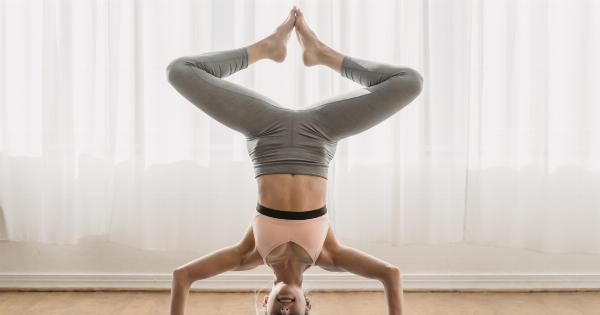Yoga is a centuries-old practice that originated in ancient India. It is a holistic approach to physical and mental well-being, combining physical postures, breathing exercises, and meditation.
Over the years, yoga has gained immense popularity worldwide for its numerous health benefits, ranging from stress reduction to improved flexibility and strength.
The Relationship Between Yoga and Strength
When it comes to enhancing strength, yoga might not be the first thing that comes to mind. However, research suggests that yoga can indeed be an effective tool for building strength.
Unlike traditional forms of strength training that involve heavy weights and repetitive movements, yoga focuses on bodyweight exercises that engage multiple muscle groups simultaneously.
Yoga poses such as downward dog, plank, and warrior variations require individuals to support their own body weight, which helps build and tone muscles.
Additionally, holding these poses for an extended period of time can activate slow-twitch muscle fibers, which are responsible for endurance and stability.
Furthermore, practicing yoga helps improve muscular endurance, which is the ability of a muscle or group of muscles to perform repetitive contractions against resistance.
This can be attributed to the prolonged holds and controlled movements involved in yoga sequences.
Yoga and Gait Speed
Gait speed is a crucial indicator of overall physical function, especially in older adults. It refers to the time it takes for an individual to walk a certain distance.
Research suggests that slower gait speed is associated with higher mortality rates, disability, and overall decline in health.
A comprehensive review of studies examining the effects of yoga on gait speed found that regular yoga practice can lead to significant improvements in gait speed.
The combination of strength, flexibility, and balance training in yoga helps improve overall physical function, leading to a faster gait speed.
Yoga postures that focus on balance, such as tree pose and half-moon pose, help improve stability and proprioception, which is the body’s awareness of its position in space.
This, in turn, enhances gait speed and reduces the risk of falls in older adults.
The Importance of Flexibility in Gait Speed
Flexibility plays a vital role in gait speed as well. Limited range of motion in joints and muscles can hinder an individual’s ability to walk efficiently.
Yoga is known for its emphasis on flexibility, with many poses targeting specific muscle groups and joints.
A study conducted on older adults found that a 12-week yoga intervention significantly improved flexibility, leading to an increase in gait speed.
The participants’ ability to move their joints through a full range of motion improved, allowing for more efficient and fluid movements during walking.
Moreover, the stretching involved in yoga helps alleviate muscle tension and tightness, which can contribute to a slower gait speed. By releasing tension and improving flexibility, yoga allows for greater freedom of movement and a swifter gait.
The Mind-Body Connection in Yoga
Besides the physical benefits, yoga also promotes a strong mind-body connection. It incorporates mindfulness, which is the practice of being fully present and aware of one’s thoughts, sensations, and feelings in the present moment.
Research suggests that a strong mind-body connection can positively influence gait speed. By cultivating mindfulness through yoga, individuals become more attuned to their body and movements.
This heightened awareness can lead to improved coordination, balance, and overall gait mechanics.
Additional Benefits of Yoga
Aside from enhancing strength and gait speed, practicing yoga offers a multitude of additional benefits for individuals of all ages and fitness levels.
Improved Balance: Yoga postures that focus on balance help strengthen the muscles involved in maintaining balance, reducing the risk of falls and improving overall stability.
Enhanced Mental Well-being: Yoga incorporates mindfulness and meditation, which have been shown to reduce stress, anxiety, and depression. Regular yoga practice can promote a sense of calm and improve overall mental well-being.
Better Posture: Many yoga poses require individuals to maintain proper alignment and engage core muscles. Over time, this promotes good posture and can alleviate back pain caused by poor posture.
Increase in Energy Levels: The combination of physical movement, controlled breathing, and relaxation techniques in yoga can boost energy levels and reduce feelings of fatigue.
Stress Reduction: Yoga is renowned for its stress-relieving benefits. The deep breathing exercises and mindfulness practices in yoga help activate the body’s relaxation response, reducing stress hormone levels and promoting a sense of calm.
Conclusion
Yoga is a comprehensive practice that offers numerous physical and mental benefits. When it comes to enhancing strength and gait speed, yoga can be an effective tool.
Through bodyweight exercises, improved flexibility, and the cultivation of a strong mind-body connection, individuals can experience significant improvements in strength, endurance, and overall physical function. Additionally, the various physical and mental benefits of yoga make it a holistic approach to well-being that can benefit individuals of all ages and fitness levels.






























